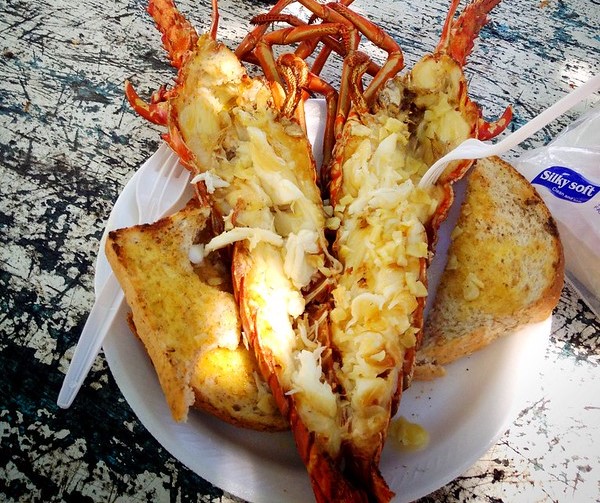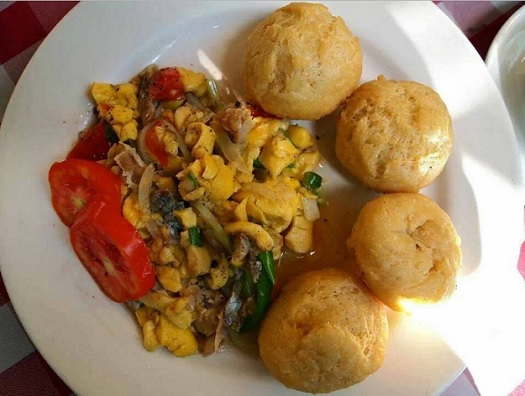Subscribe for all my updates and don't miss a thing! Sign me up!
What Not To Eat In Jamaica?
6 Tips When Dining In Jamaica
Sharing Is Caring! Share this awesome content with your friends now.
by Venesha Johnson | Associate Writer
One thing that has placed Jamaica on the map is our local culture and cuisine. Dishes such as our national dish, ackee and saltfish, jerk chicken, curried goat, mannish water and many others, have made Jamaica’s cuisine one of the most looked forward to things about a trip to the island.
And even without ever visiting, it is enjoyed by many all over the globe through the many Jamaican or Caribbean restaurants located there.
New! Take a piece of Jamaica with you💃!
Savour the memories! Now you can get your authentic Jamaican souvenir items, as well as traditional Jamaican herbs, spices and housewares on our popular e-store. Click Here to learn more.
And, if you ever need a trustworthy and knowledgeable local guide, consider booking a private tour with us!
There are not many things that I would tell a person not to try on their visit to Jamaica when it comes to food. I probably could come up with a list of 15 dishes off the top of my head that every visitor must try but on this list of what not to eat in Jamaica, there are only five items.
Wild Fruits and Berries
Jamaica has many wild fruits and berries. Just walking along a random street side, garden, park, anywhere really and you might spot a small plant or two with tiny purple, black or even red berries at times. These are not edible berries and can cause severe reactions.
One such fruit that is quite popular and considered edible at one point is the susumba. Jamaicans have been warned not to consume susumber berries, also known as "susumba" or "gully beans," that are undeveloped or abnormal because they may be dangerous and even lethal.
The ingestion of various species has resulted in occasional occurrences of susumber poisoning over the past five years in Jamaica. Jamaican susumber poisoning was first recognized here in the nineteenth century.
Imported Seafood
If you are a seafood lover or a strict pescatarian you might visit the island with the hopes of enjoying a seafood-only diet. Of course, this is possible as Jamaica has many fishing villages that supply various markets and restaurants with seafood.
However many restaurants import their seafood, for various reasons, for some it is more cost-effective, and for others, it’s because they simply cannot find the supply in the quantity they desire, here in Jamaica. Imported seafood leaves you at a higher risk of food poisoning, they are not as tasty and do impact the overall outcome of the dish.
Lobster
The Caribbean spiny lobster is the variety of lobster you are most likely to find on your plate in Jamaica. Some claim that this variety of lobster tastes fishier than Maine lobster. They resemble enormous crayfish the most and lack the Maine lobster's big claws.
Additionally, the meat of Caribbean spiny lobsters is a little firmer. Jamaica's annual lobster season lasts from July until March. The lobsters are allowed to reproduce and repopulate during the closed season, which runs from April 1 through June 30.
It is prohibited to fish for lobster during the closed season, and it is also against the law to retain live lobsters in any container.
Jerk Chicken at fine dining restaurants
Jerk chicken is great! It is one of the main dishes that have put Jamaica on the international scene and is one of the first dishes many visitors want to try as soon as they land. You will find it on the menu at most restaurants.
Most fine dining restaurants however do not prepare their jerk chicken using traditional methods, the most important one being the charcoal grill, with the pimento branches. Instead, most prepare theirs in the oven or by using electric grills and regardless of how good it tastes, it will never taste the same as authentic traditional jerk chicken.
For the best experience, get your jerk chicken from popular jerk huts such as Scotchies in Montego Bay, Ultimate Jerk Centre in Discovery Bay, Kingston jerk shacks or Boston Jerk in Portland.
Ackee
Now we aren’t saying eat Ackee in Jamaica, not only is it our national fruit, but it is also a key ingredient in one of our most famous dishes. But as you would probably have known by now, ackee, if unripe or unopened, can be very poisonous.
In Jamaica, the ackee is in season between January to March and from June to August. These are the best times to purchase ackee dishes and avoid the effects of being served unripe ackee, it is believed that some vendors will pry open unripe ackee from their pods to fulfil sales. Also, never attempt to eat ackee raw either.
If you are looking for some dishes that you absolutely must try though, click here.
Sharing IS Caring! Please help me get the message out by sharing this article with your friends on social media (links below). Thnx ;-)
If you found this page useful, please consider subscribing to my weekly newsletter, to get even more.
It tells you each week about the new information that I have added, including new developments and great stories from lovers of Jamaica!
Return to Jamaican Food from What Not to Eat In Jamaica?
Return to My Island Jamaica Homepage from What Not to Eat In Jamaica?
References & Sources For What Not to Eat In Jamaica?
- Deadly Susumber - experts warn public to be wary of consuming 'gully beans' (2019) Deadly susumber - Experts warn public to be wary of consuming 'gully beans' | Lead Stories | Jamaica Gleaner. Available at: https://jamaica-gleaner.com/article/lead-stories/20191229/deadly-susumber-experts-warn-public-be-wary-consuming-gully-beans (Accessed: November 3, 2022).
- Morrow, K. (2022) When is the lobster season in Jamaica?: Beaches, Here Comes The Sun - The Official Beaches Resorts Travel & Lifestyle Blog. Here Comes The Sun - The Official Beaches Resorts Travel & Lifestyle Blog. Available at: https://www.beaches.com/blog/lobster-season-jamaica/#:~:text=Lobster%20season%20in%20Jamaica%20is%20from%20July%20up%20to%20around,chance%20to%20breed%20and%20repopulate (Accessed: November 3, 2022).
What Not To Eat In Jamaica? | Written: October 28, 2022
New! Get My Latest Book👇🏿
|
You asked, I've answered! You no longer need to save for months or years, to enjoy paradise! I spilled the beans! sharing my top tips on finding cozy accommodations and secret gems, only the way a native could! Click Here to pick it up on my e-store and start saving now! |
See The Best Of Jamaica - In Videos!
|
My channel reaches over 140,000 subscribers worldwide and has leveraged over 11 million views, sharing, what I call 'The Real Jamaica'. Subscribe today and join our family of viewers. |
Read More ...
New! Experience The REAL Jamaica!
Book Your Private Tour here and experience Jamaica the way we (locals) do!
P.S. Didn't find what you were looking for?
Still need help?
Click Here to try our dependable and effective Site Search tool. It works!
Or, simply click here and here, to browse my library of over 500 questions and answers! Chances are someone already asked (and got an answer to) your question.












New! Comments
Have your say about what you just read! Leave me a comment in the box below.